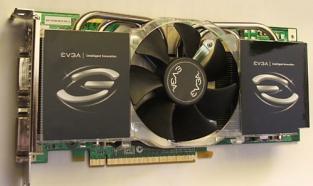OOPS! You forgot to upload swfobject.js ! You must upload this file for your form to work.
Intel bloomfield recommended memory voltage
![]()
|
xtreview is your : Video card - cpu - memory - Hard drive - power supply unit source |
|
|||
|
|
||||
 Recommended : Free unlimited image hosting with image editor
Recommended : Free unlimited image hosting with image editor
|
POSTER: computer news || INTEL BLOOMFIELD RECOMMENDED MEMORY VOLTAGE |
DATE:2008-10-10 |
|
|
From one side, Asus with the reference to intel specification recommends to not exceed 1.65V as memory voltage, since this can lead to the damage of central processor. From other side, some enthusiasts were able to exceed the recommended voltage level without any consequences, observed over the short and long term.
As explained associate, all depends on the bios settings . In the general case intel actually does not recommend to increase the memory voltage beyond the limits of 1.5-1.65 v, since this can reduce the processor service period . If user set the memory voltage to 2.0 v without any bios settings fine adjustment , the processor can malfunction almost immediately. Memory producers already prepare DDR- 3 complete sets , capable of working in the regimes up to DDR 3-1600 with the relatively low voltages and aggressive timing. It is completely possible that after some setting selection (Bios) DDR3 memory modules can be safely exploited with approximately 1.7-1.8 v. According to some calculation, the integrated three-channel memory controller for bloomfield processors ensures such capacity which is sufficient to the majority of users even in the regimes DDR 3-1333 or DDR 3-1600. However, extreme overclocer will use advanced motherboard which allow to overcclock memory to more than DDR 3-2000 without the fatal consequences for the processor. | ||
|
|
||
|
xtreview is your : Video card - cpu - memory - Hard drive - power supply unit source |
|
|
|
|
||
|
Xtreview Support  N-Post:xxxx Xtreview Support        |
INTEL BLOOMFIELD RECOMMENDED MEMORY VOLTAGE |
| Please Feel Free to write any Comment; Thanks  |
Intel eof Bloomfield generation processors (2014-01-02)
Lynnfield overclock will be more limited than Bloomfield (2008-10-22)
Intel Bloomfield can work with different memory (2008-10-21)
Intel Bloomfield detailed announcement (2008-10-16)
Intel bloomfield recommended memory voltage (2008-10-10)
Intel talk about Bloomfield speed (2008-10-07)
lynnfield processor vs bloomfield (2008-10-07)
Asus advertise Intel bloomfield speed (2008-09-28)
ALL bloomfield processor will overclock the memory well (2008-09-20)
Intel Bloomfield processors name and prices (2008-09-16)
Intel Bloomfield max safe voltage (2008-09-12)
Intel bloomfield b2 stepping overclock and benchmark (2008-09-07)
Intel bloomfield memory overclocking (2008-09-07)
Intel bloomfield B2 serial processor will be even better (2008-09-06)
Intel bloomfield air overclocking 4.1 GHz and 9s super pi (2008-09-05)
Lynnfield core will bigger than Bloomfield (2008-09-04)
Low end Bloomfield will not clock well (2008-08-25)
Intel bloomfield release date (2008-08-22)
Bloomfield vs Yorkfield (2008-08-19)
Intel bloomfield benchmarks (2008-07-16)
![]()
To figure out your best laptops .Welcome to XTreview.com. Here u can find a complete computer hardware guide and laptop rating .More than 500 reviews of modern PC to understand the basic architecture


7600gt review
7600gt is the middle card range.
We already benchmarked this video card and found that ...

 geforce 8800gtx and 8800gts
geforce 8800gtx and 8800gts  Xtreview software download Section
Xtreview software download Section  AMD TURION 64 X2 REVIEW
AMD TURION 64 X2 REVIEW  INTEL PENTIUM D 920 , INTEL PENTIUM D 930
INTEL PENTIUM D 920 , INTEL PENTIUM D 930  6800XT REVIEW
6800XT REVIEW  computer hardware REVIEW
computer hardware REVIEW  INTEL CONROE CORE DUO 2 REVIEW VS AMD AM2
INTEL CONROE CORE DUO 2 REVIEW VS AMD AM2  INTEL PENTIUM D 805 INTEL D805
INTEL PENTIUM D 805 INTEL D805  Free desktop wallpaper
Free desktop wallpaper  online fighting game
online fighting game  Xtreview price comparison center
Xtreview price comparison center Lastest 15 Reviews


Rss Feeds
Last News
- The new version of GPU-Z finally kills the belief in the miracle of Vega transformation
- The motherboard manufacturer confirms the characteristics of the processors Coffee Lake
- We are looking for copper coolers on NVIDIA Volta computing accelerators
- Unofficially about Intels plans to release 300-series chipset
- The Japanese representation of AMD offered monetary compensation to the first buyers of Ryzen Threadripper
- This year will not be released more than 45 million motherboards
- TSMC denies the presentation of charges from the antimonopoly authorities
- Radeon RX Vega 64 at frequencies 1802-1000 MHz updated the record GPUPI 1B
- AMD itself would like to believe that mobile processors Ryzen have already been released
- AMD Vega 20 will find application in accelerating computations
- Pre-orders for new iPhone start next week
- Radeon RX Vega 57, 58 and 59: the wonders of transformation
- ASML starts commercial delivery of EUV-scanners
- The older Skylake processors with a free multiplier are removed from production
- Meizu will release Android-smartphone based on Helio P40
- AMD Bristol Ridge processors are also available in American retail
- The fate of Toshiba Memory can be solved to the next environment
- duo GeForce GTX 1080 Ti in GPUPI 1B at frequencies of 2480-10320 MHz
- New Kentsfield overclocking record up to 5204 MHz
- Lenovo released Android-smartphone K8

HALO 3 HALO 3 - Final Fight!

PREY Prey is something you don t often see anymore: a totally unigue shooter experience.

computer news computer parts review Old Forum Downloads New Forum Login Join Articles terms Hardware blog Sitemap Get Freebies


